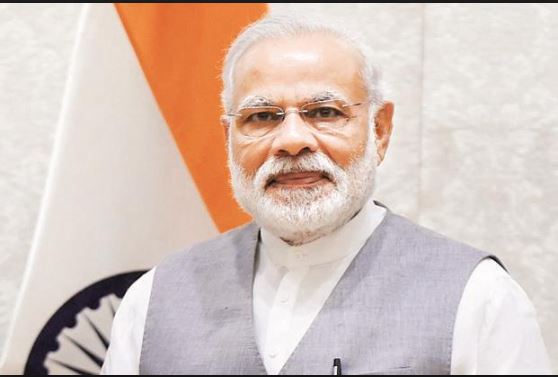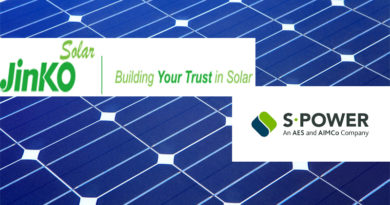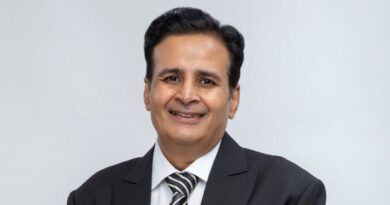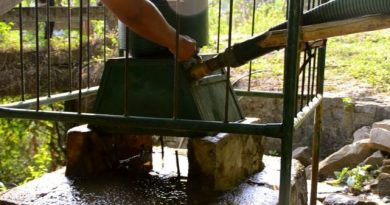The ISA as OPEC. Does the comparison from PM Modi work?
 Global Ambitions for the ISA
Global Ambitions for the ISA
Prime Minister Modi, now with a well established reputation for the catchy acronyms and analogies he draws, seemed to have really pushed the envelope too far, when he likened the International Solar Alliance (ISA) to an ‘OPEC of the future’. So what exactly did he mean by that? And is there any analogy at all that could hold true between the ISA and OPEC?
But first, let’s get a few points out of the way, as far as the 58 year old Organisation of the Petroleum Exporting Countries, or OPEC goes. For one, the obvious. To be a member, just being an oil producer is not enough, you have to be an oil exporter too. That for instance, is one of the reasons why Indonesia is no longer a member, as the country turned into a net importer in 2016. The same conditions would apply for China too.
The 15 member countries of OPEC, account for close to 44%of current oil production, and just over 81 percent of proven ‘reserves’. The six middle eastern countries on their own dominate OPEC< with 2/3rds of the cartel’s production coming from them. cartel, yes. That’s the key word with OEPC, as the organisation, in the guise of seeking ‘stability’ in oil prices, has also got a mandate to ensure oil prices donot go below a certain level now. In fact, as a cartel, OPEC’s most practical description would be an organisation that seeks to push the boundaries of oil ricing as far as it can, before it becomes counter productive. Thus, no member country in OPEC will ever be happy with oil below $60, and chances are, none of them would like to see oil above, say, $129 too. For now, the organisation seems to have settled on a consensus to try and keep oil prices between $55 and $80 preferably, with promises to step in an increase production if it crosses the upper limit. However, thanks to the volatility of the political systems in the swing producers, especially Saudi Arabia, doubts are increasingly being cast on their ability to ramp up production on demand. In recent years, fracking for oil, a technology where US based firms had edged ahead was considered the biggest threat to OPEC’s dominance, but that threat seems to be ebbing fast, thanks to fracking getting discredited for its impact on the environment. That, besides the US sanctions on Iran and turmoil in Venezuela, explains a lot of the recent oil price rise.

The ISA, on the other hand, is an open body, which has become even more open now. From an initial effort to rope in countries between the tropic of cancer and the tropic of capricorn, or all countries with good solar irradiation, the ISA is now open to any country. Almost all OPEC countries,as it turns out, are strong sunshine countries too.
The ISA’s key ‘resource’, sunlight is noone’s monopoly, although some countries might get more of it than others. Neither is the ISA in the business of setting production targets or ‘managing’ output by other means. So what exactly was Mr Modi aiming for?
Top of the chart would be scale. One of the big challenges for the solar industry is the looming presence of China, as the largest equipment supplier for the sector. With shares ranging from 80% to 65%, depending on which part in the supply chain you refer to, ‘managing’ the threat from China is a key pat of the what the ISA will seek to do. With its primarily developing world membership, the ISA thus is more about buying efficiently than selling, as OPEC is. Thus, the sweep for high membership. Currently, 68 countries have signed the framework agreement, a sort of MOU, while 44 have actually ratified it, which is more akin to proper, full membership. China, and the US, besides most of the developed world, are also out, as of now.
Another key aim for the ISA would be to build a single platform where the countries are united by a common goal, ie, access to cheap technology to produce solar energy. The idea being to use the common linkages built at the ISA to negotiate more unitedly at other gobal forums, be it the Climate accord negotiations or more. With the urgency for action increasing all the time, the developing countries, especially India, need to hold out to give themselves a chance to ensure that commitments to agreements like the Paris accord donot affect their war on poverty, for instance. the ISA is one body where they can build the bridges necessary with each other to negotiate more strongly with the pressure from the developed world.
Again, by helping build an organisation like the ISA as a founding member, one suspects that there is nothing Mr Modi would like more than to see the ISA virtually being treated like a key player in the global fight against global warming in its own right. With a stated goal of building 1 TW of solar power capacity, which would require a trillion dollars of investment, Mr Modi, and member nations of the ISA are aware that funds are the biggest challenge, and to meet such a massive target, working unitedly has its advantages. For instance, endowments from the developed world can be negotiated directly by the ISA. A lot of the funds going to various causes to fight climate change might be attracted here if the outcomes can be demonstrated clearly.
By calling for global tenders of massive size, on behalf of its members, the ISA has an opportunity to push down prices to prices to levels considered impossible for years, besides creating opportunities for manufacturing to come up in places other than China and other developed countries, on the assurance of orders of this magnitude. The tender for 500 thousand solar water pumps is just example of the way ISA can make it work. In short, with consumption set to shift to the developing world, the ISA will seek to ensure that a fair share of the manufacturing also happens there. India itself being a prime example of a massive market with manufacturing that is way below potential.
So where does the comparison work with OPEC? In a way, the ISa seeks to be a counterweight to OPEC”s dominance in fossil fuels, by seeking to ensure a fairer market in the fuels of the future, renewables. It seeks to control the market of sellers to the solar sector, by buying at scale. It seeks to build a bloc of countries united by a common minimum program, to negotiate better across global forums. And finally, much like OPEC, it will seek to ensure that the benefits of a natural resource like sunlight are not frittered away in unviable projects. India, as one of the founders, has a leadership role to play in more ways than one. Hence, the absolute squeeze the government has put on the industry here to drive down prices. It’s one way to demonstrate the government’s ability and credentials to lead the ISA. And so far, it is working.




